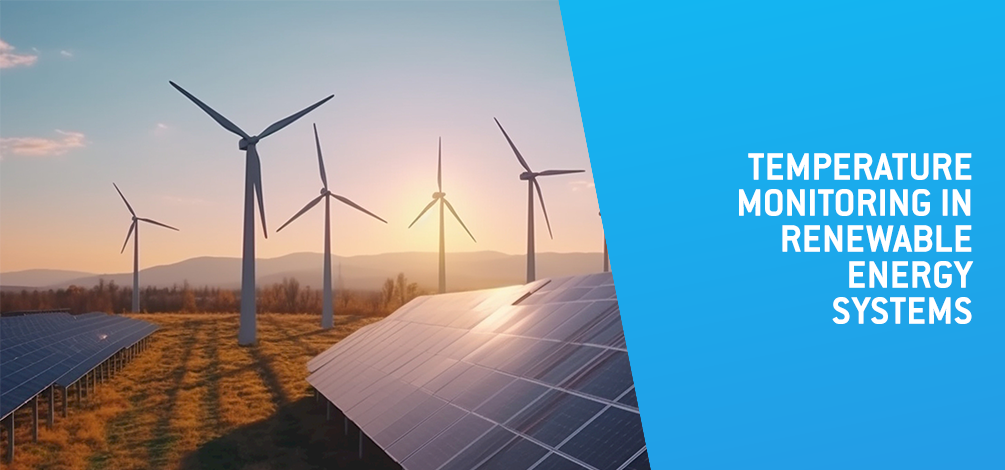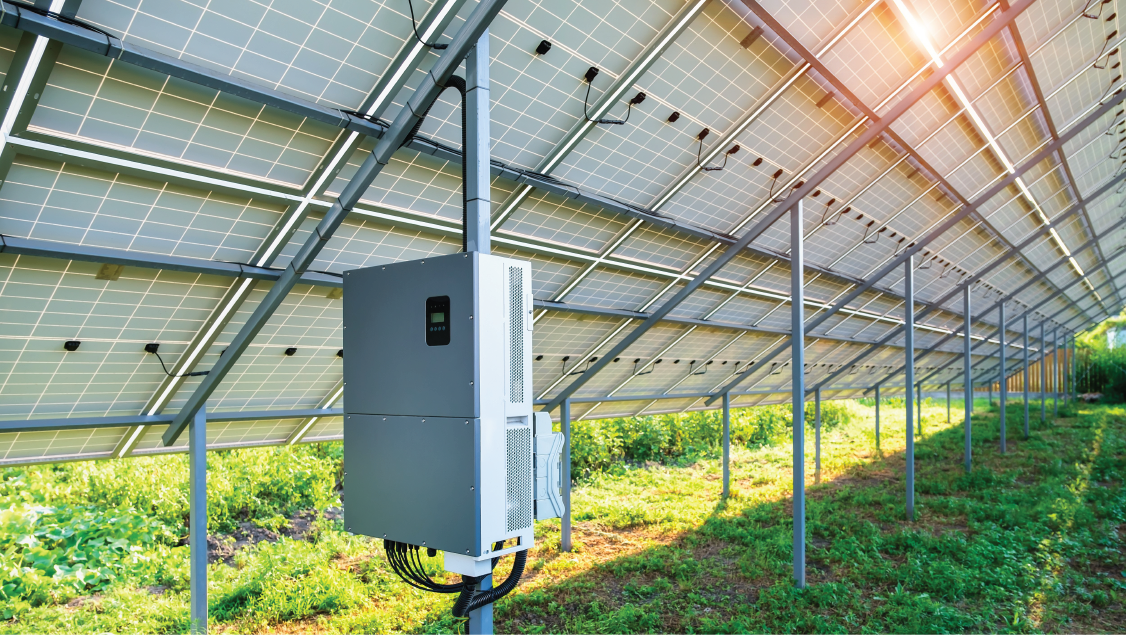Temperature Monitoring in Renewable Energy Systems

Explore the role of temperature monitoring in renewable energy systems.
As the world gravitates towards a greener, sustainable future, renewable energy systems are gaining more attention. Their performance, efficiency, and lifespan are significantly impacted by temperature variations, emphasizing the importance of correct temperature monitoring. In this article, we’ll explore the role temperature monitoring plays in solar and wind systems.
Connection between temperature and solar panel efficiency
Photovoltaic (PV) solar panels convert sunlight directly into electricity. However, they are not immune to temperature effects. The efficiency of PV modules decreases as the temperature increases, a characteristic defined by the temperature coefficient.
The optimal temperature for solar panels is around 25 °C and for every degree Celsius above 25 °C, a solar panel's efficiency can drop by approximately 0.3-0.5%. Accurate temperature monitoring becomes essential to maintain optimal functioning and efficiency.
The rise in temperature results in increased conductivity of the semiconductor substances used in solar cells. This enhances the movement of charge carriers, which in turn, decreases the generated voltage.
Temperature sensors are deployed on the back of PV modules to track their operating temperature and the data gathered from these sensors is used to counteract the temperature coefficient, thus enhancing the performance and longevity of solar energy systems.
Certain solar panel models are equipped with features that mitigate the harmful impact of elevated temperatures. Techniques such as passive cooling or increasing air circulation have been effective in bringing solar panels towards their most efficient operating temperatures.
Mitigating the effects of temperature on solar panel efficiency
Countering the influences of heat on the efficacy of photovoltaic modules is a key consideration for maximizing power output, especially in zones subjected to high thermal conditions. For this reason, we should consider the approaches available to reduce the effect of thermal fluctuations on solar panels, thereby maintaining their superior performance.
Techniques such as passive cooling, using rainwater and a part of the energy created by the panels for example, or increasing air circulation have proven to be effective in maintaining solar panels at more efficient operating temperatures.
Appropriate setup and distancing are fundamental to fostering airflow surrounding the solar cells. By maintaining a specific distance between the module's backside and its supporting framework, natural thermal transfer can take place.
The circulation of air helps to release excess heat, regulating the module's temperature. By strategically positioning solar modules at the ideal inclination and direction, it is possible to enhance their exposure to sunlight, while simultaneously diminishing the potential for thermal overload.

Wind energy systems – energy generates heat
Wind turbines are engineering marvels, with a multitude of moving parts working together. However, components, such as the gearbox and generator, generate heat during operation and long-lasting overheating can lead to significant damage and decreased energy production.
Also, the main bearing temperature of a wind turbine, for example, can be more than 5 °C different when compared to the temperature of a similar turbine in the same working state but different wind conditions.
Temperature sensors like PLUS sensors, integrated within the gearbox, generator, and bearings monitor heat levels. Regular temperature surveillance assists in identifying irregularities, enabling preventive maintenance before any system failure.
The use of temperature sensors, therefore, contributes to the durability and productivity of wind energy systems.
Looking ahead
With advancements in sensor technology and the growth of the Internet of Things (IoT), the future of temperature monitoring within renewable energy systems holds significant potential.
Real-time, remote temperature tracking through wireless sensor networks can optimize energy production and its efficiency even further. The right predictive maintenance strategies, informed by these sensors, can address potential issues beforehand, reinforcing the reliability of renewable energy systems.
Choose Tekon Electronics solutions
In brief, temperature monitoring is a crucial aspect of optimizing performance and longevity within renewable energy systems. As we move towards a sustainable energy future, the significance of effective temperature monitoring will continue to expand. Leveraging advancements in sensor and IoT technology can pave the way for renewable energy systems that are more robust, efficient, and reliable.
Tekon's wireless sensors are suitable for transmission and monitoring, according to each client's needs.
Get in touch for more details.